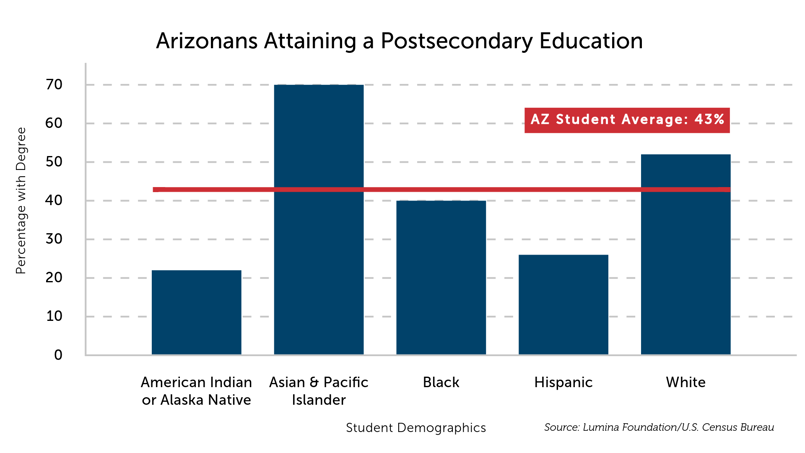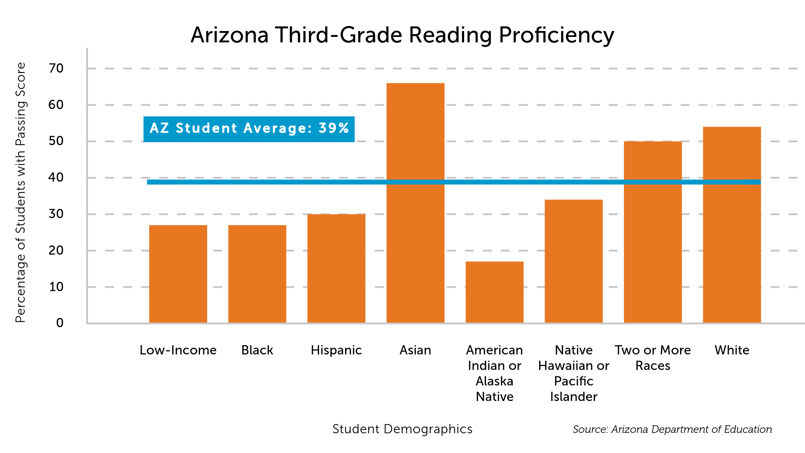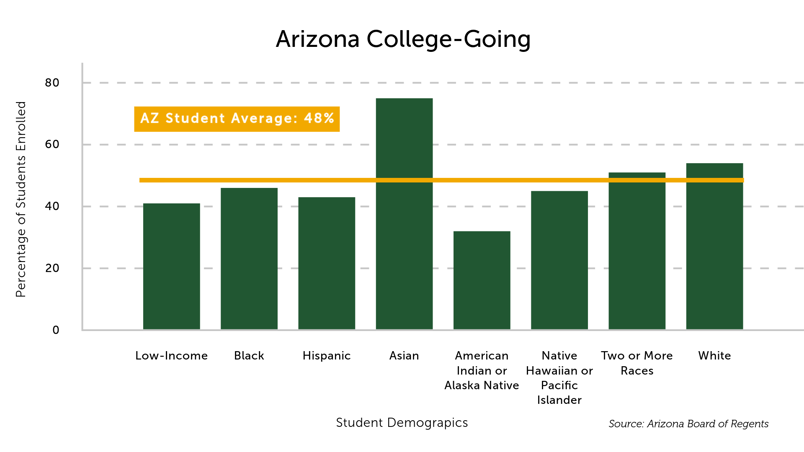The Arizona third-grade reading proficiency data from the Arizona Department of Education’s 2024 AASA shows that low-income, American Indian or Alaska Native, Black, and Hispanic students had the lowest passing third-grade reading proficiency scores in Arizona.

In Arizona, Helios Education Foundation works to support education outcomes that advance statewide postsecondary attainment goals. We do so with a data-driven approach, through community investments, research, and policy efforts.
We aim to accelerate the pace of change in Arizona with an emphasis on low-income and historically underrepresented students where data show that increasing achievement rates for these student populations is the most effective way to achieve success for all students.
Why is Helios focused on low-income and historically underrepresented students in Arizona?
 In short, these are the largest populations of students struggling the most. For example, Latino students in Arizona represented nearly 50% of the public student population throughout the 2023-2024 school year.
In short, these are the largest populations of students struggling the most. For example, Latino students in Arizona represented nearly 50% of the public student population throughout the 2023-2024 school year.
When it comes to our youngest learners, just 39% of Arizona’s public school third graders are proficient readers. However, reading proficiency is even lower for Latino (30%) and low-income (27%) third graders in the state. While Arizona students are enrolling in college after high school at an average of 48%, the college-going rate is lower for Latino (43%) and low-income students (41%) in Arizona.
That is why Helios is zeroing in on improving outcomes for low-income and historically underrepresented students in Arizona. To increase college graduation rates for these students—and use what we learn to increase achievement for all students—we are focused on three key drivers essential to getting these subpopulations on track for college attainment:
- Ensure that students are reading proficiently by the end of third grade
- Increase college enrollment
- Increase attainment of two- and four-year college degrees
We are focusing on these three areas because we believe they provide the best leverage for ensuring that students are prepared for and on the path to a college degree. Ultimately, Helios seeks to ensure that all children in Arizona have the full potential to succeed in an educational pathway that will take them where they want to go.
Learn more about the programs we’re supporting throughout Arizona:
The Arizona college-going data from the Arizona Board of Regents’ 2023 Postsecondary Attainment Report includes Arizona public high school students enrolling within one year after graduation in 2022. The data shows that low-income, American Indian or Alaska Native, and Hispanic students in Arizona had the lowest rate of college enrollment.

The Arizona postsecondary education attainment data from the Lumina Foundation/U.S. Census Bureau shows that American Indian or Alaska Native and Hispanic students in Arizona had the lowest degree attainment rate.
Latest in Arizona:
Explore Helios research, program success stories and more happening in Arizona.



